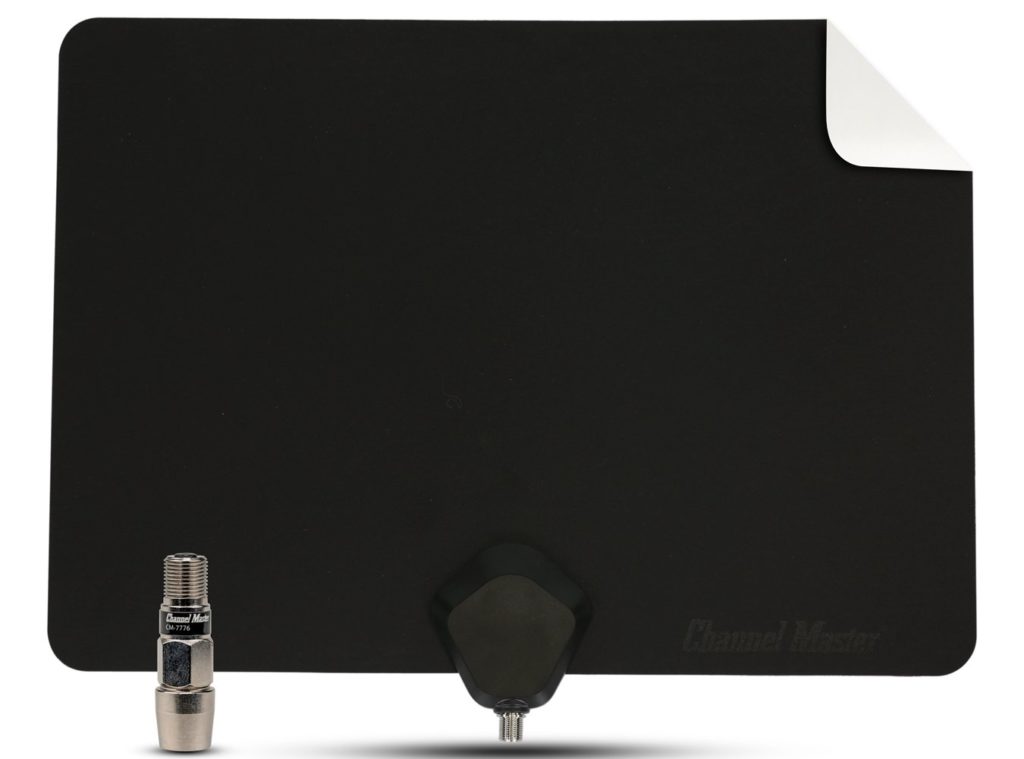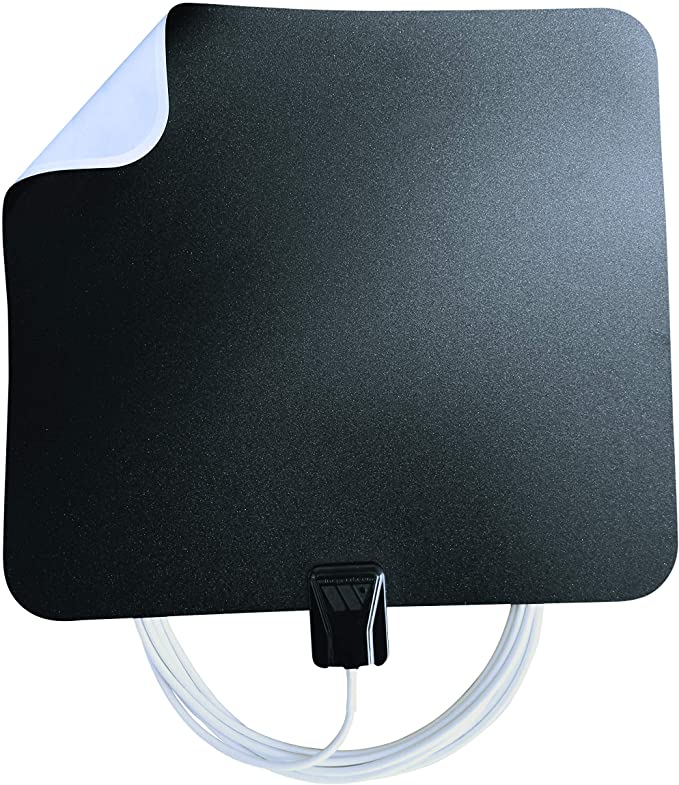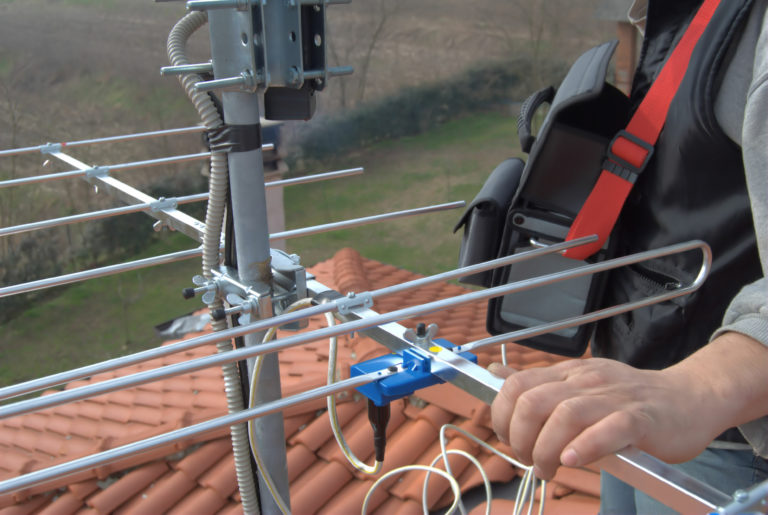Using an indoor antenna for local channels can give you the advantage of watching all of the broadcast channels in your area for free. But choosing the best HD antenna for indoors is essential to receiving the most channels possible.
Fortunately, indoor television antennas are an affordable way to still enjoy the local news, sports, sitcoms, movies and more on the most popular TV networks in the country. You also get to experience some channels you may not be aware of.
In addition, over-the-air TV signals provide excellent picture quality. OTA TV is transmitted using digital compression, but because few channels are broadcast using the signal, little data is lost. This results in a clear, sharp picture.
When you use an antenna for local channels, you can avoid outages caused by rain or snowstorms, so you’ll be able to access emergency broadcasts on TV during severe weather.
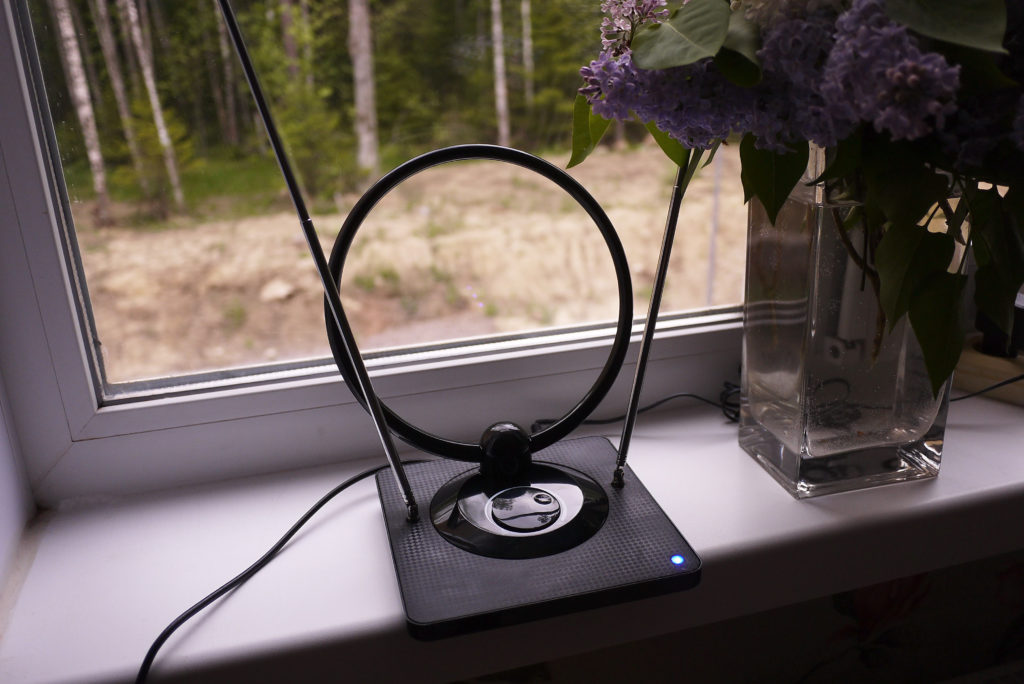
Our Indoor Antenna Buying Guide
There are several factors to consider when shopping for an indoor HDTV antenna. First, there are many types of indoor antennas. For example, dipole antennas, which are often referred to as rabbit ears antennas, are a common type of antenna for local channels. Another option is loop antennas, which are a modified version of dipole antennas in which the two poles are folded and configured in a circle, square or a series of circles or squares.
You can also choose between an amplified and a non-amplified antenna for local TV stations. A non-amplified antenna for local channels can receive OTA signals from nearby broadcasting towers and doesn’t require a connection to a power source. On the other hand, an amplified indoor HDTV antenna requires power, but it can boost signals impeded by interference such as buildings or trees.
Another consideration to bear in mind is the distance rating (most indoor models are rated for distances between 20 to 60 miles). Next, look at any additional features an indoor HDTV antenna offers, such as Bluetooth connectivity, an inline amplifier or different mounting options. Finally, there is your budget, the ease of setup and use and even the appearance of the indoor HDTV antenna.
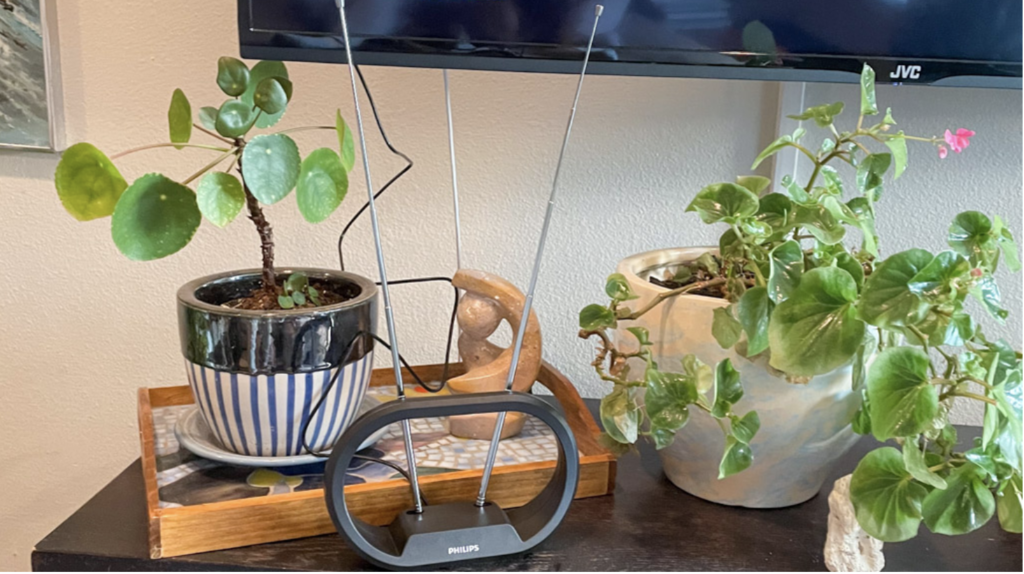
Our Picks For The Best Indoor HDTV Antennas
Channel Master FLATenna+ Amplified Indoor TV Antenna
This flat, lightweight antenna is easy to mount on a wall or window. It features a range of up to 50 miles and a MicroAmp amplifier, which has been fine-tuned for optimal performance to improve reception. Since this antenna uses a standard RG6 coaxial cable, you can use any length you need, although it does include a 12-foot premium quality cable. It also comes with adhesive strips for mounting and an instruction guide.
Clearstream 2 Max UHF/VHF Indoor/Outdoor HDTV Antenna With 20″ Mast
This powerful antenna has the flexibility to be used indoors or out. With virtually no assembly required, this antenna for local TV stations features an integrated diplexer for reliable, multi-directional UHF and VHF reception. The upright figure-eight design has dipole antenna bars in the back and is rated to pick up stations as far as 60 miles away. The non-amplified antenna doesn’t need to be near a power outlet. It includes a 20-inch mast along with mounting hardware, an adjustable mast clamp and a base stand for convenient tabletop installation.
Mohu Leaf Supreme Pro Amplified Indoor HDTV Antenna with Signal Indicator
This indoor HDTV antenna boasts the ease of use of an indoor antenna combined with the strong signal reception of an outdoor antenna. It is rated to reach a 65-mile radius. The amplifier is built into the base of the antenna for enhanced TV reception and the integrated LED signal indicator makes finding the best location to receive signals a breeze. It is larger than most flat, plastic antennas, measuring 12-by-21.5 inches. It comes with hook-and-loop mounting strips as well as push pins for window or wall mounting.
Winegard FlatWave Indoor Amplified TV Antenna
This antenna for local channels features an embedded low noise digital TV antenna amplifier that helps it pull in signals within a 60-mile range. The HD dual-band VHF/UHF TV antenna is ultra-thin and lightweight at just over half a pound. Its small size requires minimal space on your wall or in your window. It is powered by a supplied USB power adapter. You can also run it from a USB socket on the TV if it has one.
RCA ANT4WH Flat Multi-Directional HDTV Antenna
This affordable indoor antenna receives both UHF and VHF signals and has a distance rating of up to 40 miles from the broadcast tower. You can use the free Signal Finder App to align your antenna perfectly and its patented, 360-degree multi-directional design reduces the need for frequent adjustments. You can lay it flat, hang it or stand it upright with the included easel stand, and it also comes with a nine-foot coaxial cable.
Antop Smart Bar HDTV FM Amplified Antenna With Smart Boost System
The Smart Bar is a unique indoor HDTV antenna with a sleek, high-tech design. Antop’s exclusive Smart Boost System lets you adjust the reception power, which is rated for an 80-mile signal range. You can connect it to two devices simultaneously, and its integrated 4G LTE filter reduces picture pixelation. The multi-directional antenna also includes a built-in FM antenna. You can stand the 29-inch-tall antenna vertically or mount it vertically for more versatility.
Pair your antenna with an OTA DVR to record your favorite shows:
An OTA DVR device lets you record, pause, rewind and fast forward your favorite shows. Here are the products we recommend:
- Tablo DUAL 128GB Over-the-Air [OTA] DVR: Record up to 80 HD hours and stream up to two free broadcast channels from your HDTV antenna simultaneously.
- Tablo QUAD 1TB Over-the-Air [OTA] DVR: Record up to 700 hours and stream up to four free broadcast channels from their over-the-air HDTV antenna simultaneously.
If you have an external hard drive sitting at home collecting dust, consider these options as cheaper alternatives. Simply connect your antenna and portable hard drive to these Tablo DVR devices and you’re ready to go.
- Tablo DUAL Lite: Equipped with built-in Wifi, it lets you position the antenna and DVR for the best signal reception.
- Tablo QUAD: Record up to four OTA channels simultaneously. This model connects to your router rather than your TV, giving you the option to stream live TV to any device.
If you need to purchase a portable hard drive, we recommend USB-connected portable hard drives (USB 2.0 or 3.0, 1 TB to 8 TB in size). These are the ones we recommend: WD 1TB Elements Portable External Hard Drive and the WD 2TB Elements Portable External Hard Drive.
Tips And Advice For Indoor HDTV Antennas
- It’s essential to consider the types of signals an antenna receives. For example, some indoor HDTV antennas receive only VHF channels, channels 2 through 13, while UHF antennas pick up broadcasts above channel 13. Alternatively, you could opt for a combination UHF/VHF TV antenna. You can determine what you need by searching your location on the FCC’s DTV Reception Maps. The search results will show you whether the strongest signals in your area are UHF, VHF or a combination of the two.
- When you use an antenna for local channels, it’s an excellent idea to rescan your TV occasionally. New channels are often added, and broadcasters may bolster transmissions, so it can be beneficial to see if you are missing out on any available channels. Follow the exact instructions you used when initially setting up your TV with your antenna. If you need help, the FCC provides instructions for rescanning with the remote control for many popular TV or converter box manufacturers.
- It might seem most convenient to place an indoor HDTV antenna on top of or beside the TV. However, installing it higher up on a wall or close to a window will usually result in the best reception. An even better option is to place it in an attic or second-story location, if possible.
- Most indoor HDTV antennas are directional (or unidirectional). This means they will perform better if they face a broadcast tower. Using the FCC DTV Reception Map, you can find out the direction of nearby towers and position the antenna in that direction. Always perform another channel scan after you have adjusted your antenna.
- If you are relatively close to one station’s broadcast tower, the strong signal overload can interfere with reception. Choosing an antenna for local channels that does not have a signal amplifier can help resolve this issue. Alternatively, you might have to install an attenuator, an electronic device that reduces the power of a signal without significantly deteriorating the displayed broadcast.

